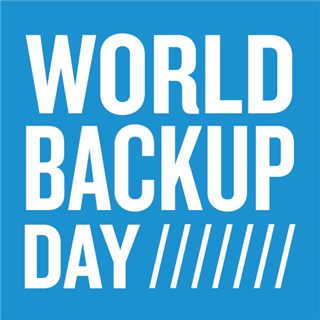When you live in South Florida and you see a photo like this one in your weather forecast, you remember why those of us who work in data protection have proclaimed March 31 World Backup Day.
Most of the time, of course, data protection just hums along in the background, where you don’t see it or think much about it. IT has (or should have, anyway) tools for testing data protection as part of its disaster recovery strategy. They use those tools to assure the entire organization that customers and users will get along fine in case a parade of disasters comes marching through the building.
But don’t forget that data protection and backup boil down to one simple question: What would you do if you lost everything?
Data and infrastructure protection through all sorts of disasters
Last time, I posted about IT optimization and a 1969 Pontiac GTO when I lived in New York. I came to South Florida for the swimming and diving, and ended up staying for the hurricanes. Three of them so far. A lot of us around here have personal, in-depth stories of business continuity problems.
Take Hurricane Irma in 2017, which tracked up the west coast of Florida, causing a couple billion dollars in damage. I lost power for a day and could do nothing work-related, which was a big enough headache. But when Irma was finished with us, it crept north and inundated Georgia.
My company’s data center in Atlanta lost power for at least a day due to flooding and wind damage. Fortunately, IT had replicated our applications, systems and data to multiple data centers around the hemisphere, so users and customers could still connect almost normally and continue doing business, even though most of our offices in three states were closed for weather.
Besides nasty weather, think of mundane occurrences like accidental data loss, deliberate cyberattacks and server, storage or application crashes. Then come unplanned, man-made disasters like fires and power outages. While you can’t predict those things, you can (and should) plan for them.
Predictive business continuity and data protection
We’ve published a white paper called Achieving Predictive Business Continuity that presents our proactive approach to business continuity. We wrote it because see our customers in IT moving beyond the usual, reactive, problem-solving tasks of backup, network administration, infrastructure expansion and user support.
After all, when there’s a disaster, whom does the organization turn to for guidance? It turns to management. And whom does management phone first? IT, because the roles of IT are to protect systems, applications and data from disasters and then, when a disaster slips through, to recover and get the business back to work pronto.
As part of that role, IT puts in place service-level agreements (SLAs) including recovery point objectives (RPOs) and recovery time objectives (RTOs). IT uses SLAs to set everyone’s expectations for how long it will take to recover from a disaster, down to the level of how much productivity the company will lose and what will happen with services as sensitive as network access and email.
That’s the ever-growing role IT plays in building confidence in business continuity and the organization’s ability to navigate through disasters. Management doesn’t expect IT to predict when the next disaster will strike, but it does expect that IT will be able to recover when it does strike. And when IT is confident in its data protection strategy, it’s halfway to predictive business continuity.
As I mentioned before, IT infrastructure optimization is the other half of predictive business continuity. It ensures that, to start with, you have the right level of resources (CPU, memory, storage, network) in place to support business demands. That way, you don’t increase the risk of system and application crashes yourself. Infrastructure optimization also ensures that you’re not over-compensating by spending on under-utilized infrastructure and wasting valuable budget that could be used to enable business growth instead.
Next step
With predictive business continuity, you see the synergy between infrastructure optimization and data protection and reap its benefits. It means you have everything in place to recover from business disruptions, whether due to man-made, accidental or natural disasters. It also means you have the foresight to avoid resource shortages and mitigate the risk of those business disruptions in the first place.
Download our white paper, Achieving Predictive Business Continuity and gauge the fit with your IT team and entire company. In general, we believe that IT groups offer more value to their organizations when they plan for predictive business continuity by combining infrastructure optimization and data protection.
And Happy World Backup Day! Don’t forget that the day after March 31 is April 1. Do you really want to spend April Fools’ Day recovering from an inadequate backup strategy?
Image credits: NOAA Satellites, public domain; WorldBackupDay.com, Creative Commons BY-NC-ND 4.0






